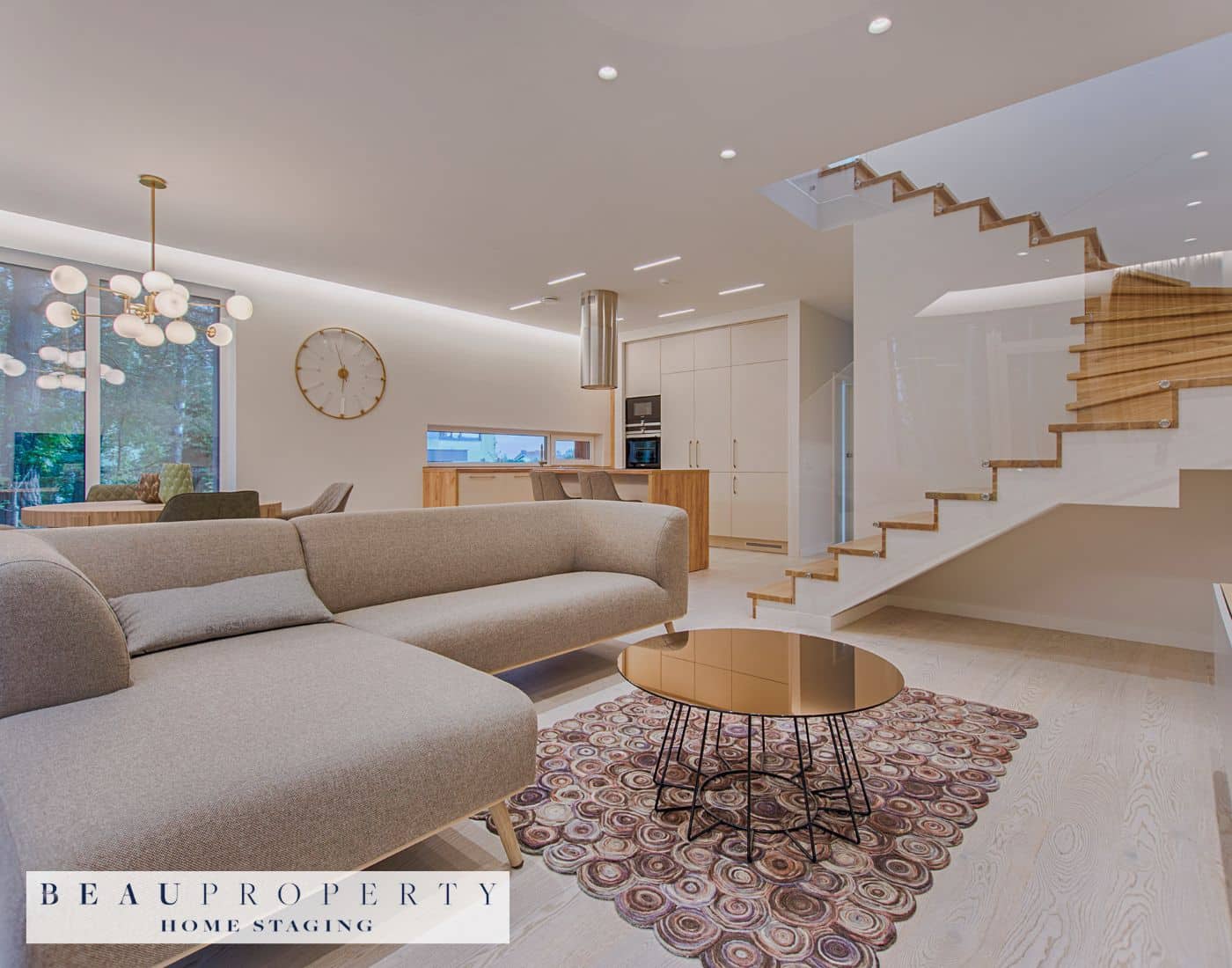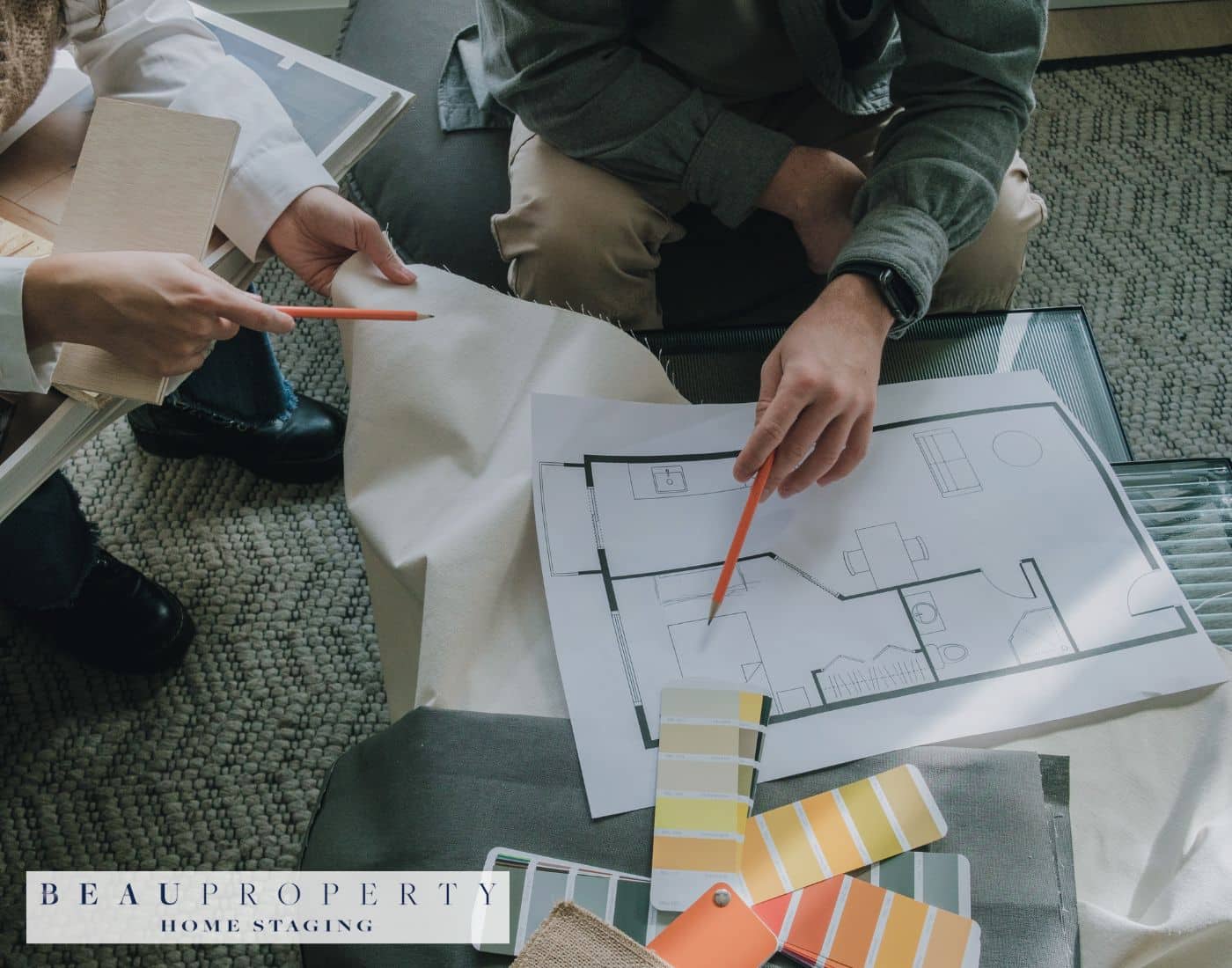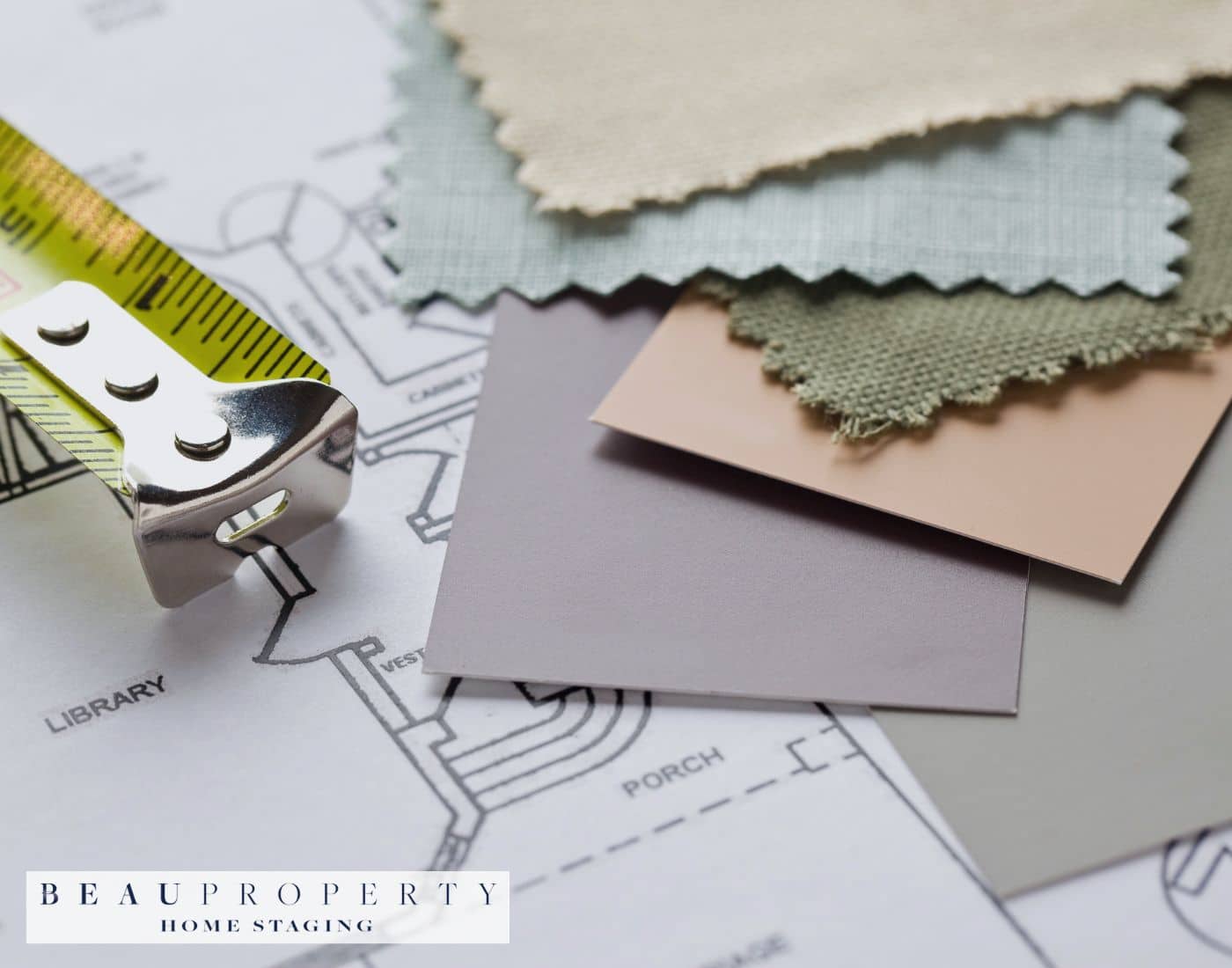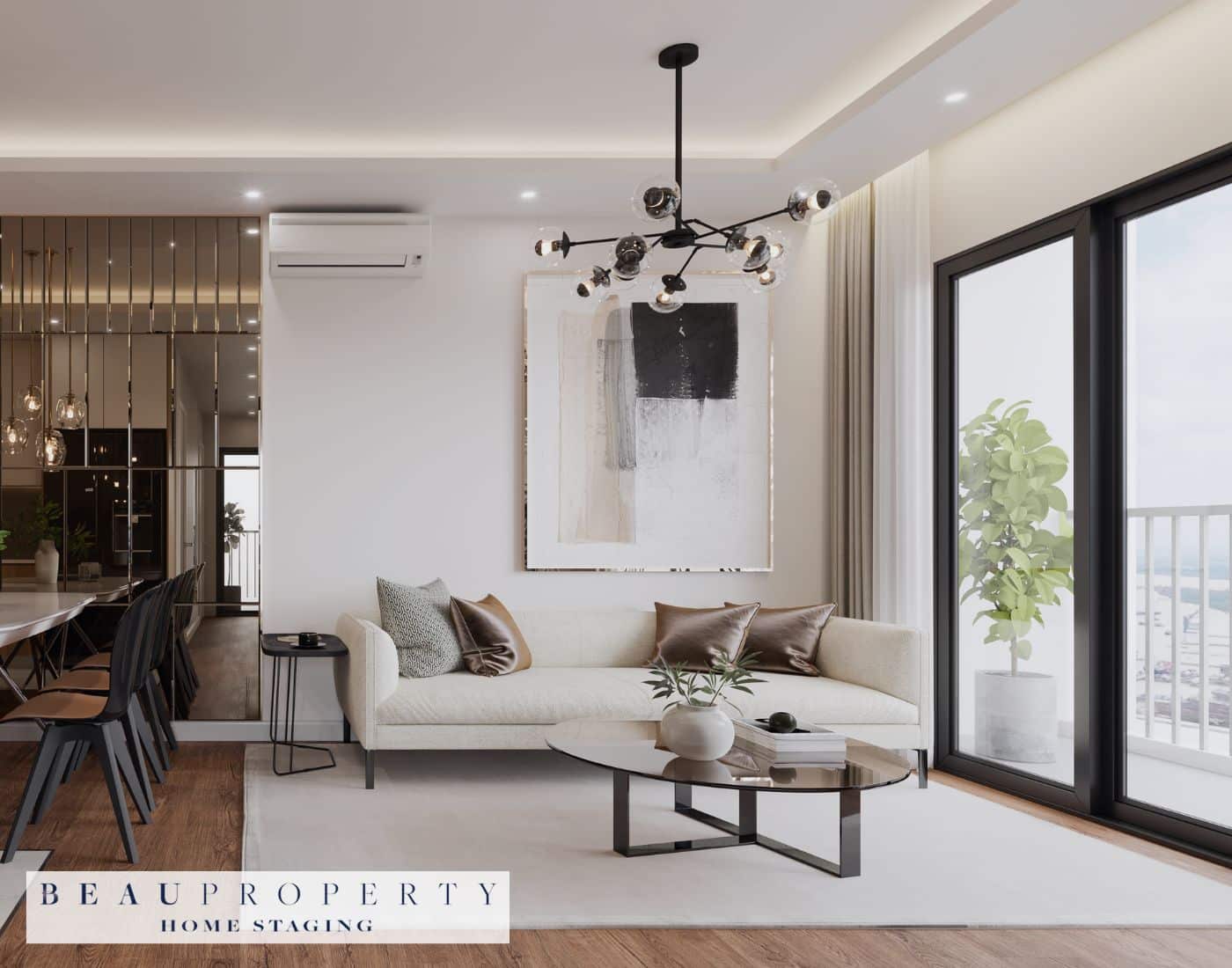Understanding Home Staging vs Interior Design
Key Differences Between Staging and Interior Design
Home staging and interior design might seem similar at first glance, but their goals and methodologies are distinctly different. The main goal of home staging is to depersonalise a space and highlight its best features to appeal to the widest audience possible. This approach is focused on preparing a property for immediate sale, making it more appealing to potential buyers.
On the other hand, interior design is highly personalised. It’s about creating a living space tailored to the unique style, tastes, and preferences of the occupants. Interior design is not just about aesthetics; it’s the art and science of understanding people’s behaviour to create functional spaces that complement their lifestyle.
Staging for Quick Preparation vs. Designing for Long-Term Living
When staging a home, the aim is often short-term. The process involves making swift, effective changes to ensure the property appeals during showings and open houses. It’s about impact, rather than longevity. For example, neutral tones might replace bold colours to ensure broad appeal, and furniture is arranged to amplify space and light.
Interior design, conversely, involves a more extensive and long-term commitment. The changes made are usually more permanent, involving structural modifications and detailed personalisation. This process often starts right from the initial stages of space planning and design concept, ensuring functionality and comfort tailored specifically for the homeowner.
Depersonalisation in Staging vs. Personalisation in Interior Design
Depersonalisation is a cornerstone of home staging. The goal is to create a canvas that allows potential buyers to envision themselves living in the space. This means family photos, unique art pieces, and personal memorabilia are put away. Furniture and décor are chosen and arranged to flatter the home’s architecture without imposing a particular style.
Conversely, interior design thrives on personalisation. It reflects the homeowner’s individuality and caters to their practical and aesthetic needs. The designer works closely with the homeowner to integrate personal touches, family heirlooms, and chosen colour schemes, creating a space that is both functional and reflective of the owner’s personality.
Understanding these foundational differences helps clarify the distinct purposes and methodologies behind home staging and interior design. Each has its unique place and offers invaluable benefits depending on the desired outcome—whether it’s to make a swift sale or to create a lasting, personalised living space.
Core Elements of Interior Design in Staging
When it comes to staging a home, the goal is to create an environment that attracts potential buyers and encourages them to envision themselves living in the space. Applying the core elements of interior design—space, form, line, light, colour, pattern, and texture—strategically is essential in achieving this. Here’s how you can leverage these elements effectively.
Space
Space refers to the physical boundaries of a room. In staging, it’s crucial to make the space look as open and inviting as possible.
- Maximise Space: Use furniture strategically to make the room appear larger. Opt for smaller, functional pieces that don’t overwhelm the space.
- Flow: Arrange furniture to ensure easy movement throughout the room, creating a natural flow that guides potential buyers through the home effortlessly.
Form
Form refers to the shape and structure of objects within a space. It includes both the architecture of the home and the furniture within it.
- Functional Forms: Choose furniture and decor that fits the style of the home, whether it’s contemporary, traditional, or rustic.
- Cohesion: Ensure that all forms within a space are harmonious. Avoid mixing too many different styles, which can create a cluttered look.
Line
Lines guide the eye and create visual interest. They can be vertical, horizontal, or dynamic (curved or zigzag).
- Vertical Lines: Use vertical lines to add height to a room. This can be achieved with tall furniture or elongated decor items.
- Horizontal Lines: Horizontal lines can make a space feel wider and more expansive. Use long sofas or wide rugs to take advantage of this effect.
Light
Light is one of the most powerful elements in both interior design and staging. It can dramatically affect the perception of space.
- Natural Light: Make the most of natural light by keeping windows clean and using sheer curtains. This creates an open, airy feel.
- Artificial Light: Use various light sources, such as floor lamps, table lamps, and overhead lighting, to create a warm, inviting atmosphere.
Colour
Colour sets the tone of a room and can influence a buyer’s emotions. Neutral colour palettes are often used in staging for their broad appeal.
- Neutral Tones: Stick to soft, neutral colours like whites, greys, and beiges. These colours create a blank canvas that allows potential buyers to imagine their own belongings in the space.
- Pops of Colour: Use small accents like throw pillows, artwork, or flowers to add visual interest without overwhelming the space.
Pattern
Patterns add character and can draw attention to certain features. However, it’s important to use patterns sparingly in staging.
- Subtle Patterns: Incorporate subtle patterns in textiles and small decor items to add depth without becoming a distraction.
- Consistency: Ensure patterns complement each other within the space and are not too busy.
Texture
Texture adds dimension and helps create a cosy, lived-in feel.
- Mix Textures: Combine different textures like wood, metal, and fabric to create visual interest.
- Comfort: Use soft textures like plush rugs and cushions to make the space feel comfortable and inviting.
Creating Visual Balance and Harmony
To appeal to potential buyers, a staged home needs to achieve visual balance and harmony. This means everything should feel cohesive and well-proportioned.
- Symmetry: Create symmetry to make spaces feel orderly. This can be achieved through matching side tables and balanced arrangements.
- Focal Points: Identify the focal point in each room, such as a fireplace or a large window, and arrange furnishings to highlight this feature.
By mastering these elements, you can make any home feel inviting and desirable, thereby increasing its appeal to potential buyers.
The Psychology of Staged Spaces
When staging a home, understanding the buyer’s psyche is crucial. Buyers often make emotional decisions, even when they believe they are acting rationally. Leveraging this can significantly influence their perception, potentially turning a casual viewer into a serious buyer.
Understanding Buyer Perception and Emotional Connections
Buyers resonate with homes that evoke positive feelings. Creating such an environment starts by paying attention to sensory cues and subtle psychological triggers. For instance, spaces that feel warm, welcoming, and functional can immediately captivate a buyer’s interest.
Engaging a buyer’s senses involves more than just visual appeal. It incorporates tactile, olfactory, and even auditory stimuli. Soft textures, pleasant scents, and ambient sounds can all contribute to a buyer’s comfort, enhancing their emotional connection to the space.
How Strategic Design Choices Influence Potential Buyers’ Decisions
Strategic design choices can be powerful in swaying buyers. Here are several tactics to consider:
Use of Colour and Light
Colours play a significant role in influencing mood. Neutral tones such as soft greys and beiges provide a versatile backdrop that allows buyers to envision their belongings in the space. Adding pops of colour with accessories can create focal points that highlight a room’s strengths.
Lighting is equally important. The combination of natural and artificial light can make spaces feel larger and more inviting. Well-lit rooms can accentuate features that may otherwise go unnoticed.
Furniture Arrangement and Function
A well-arranged room not only looks appealing but also demonstrates functionality. Arranging furniture to showcase the potential for gatherings in living rooms, or a quiet reading nook in a bedroom, can help buyers see themselves living in the space. The goal is to portray a lifestyle that buyers aspire to.
Creating Aspirational Lifestyle Vignettes
Buyers are often drawn to staged environments that depict an ideal lifestyle. Staged homes allow buyers to imagine themselves in those spaces, making it easier to form an emotional connection. Here are a few vignette ideas:
- Cosy Reading Nooks: Position a comfortable chair with a side table and a lamp to create an inviting reading corner. Add a few books and a soft throw to complete the look.
- Entertaining Spaces: Set a dining table with elegant place settings and fresh flowers. This creates a vision of family dinners or entertaining friends.
- Functional Office Areas: With remote work becoming more common, designing a small home office setup can resonate with buyers looking for practical work-from-home solutions.
Transitioning Potential Buyers into Homeowners
Understanding and utilising buyer psychology in home staging can make a world of difference. As we’ve discussed, the right emotional and sensory cues, strategic design choices, and aspirational setups create a compelling narrative. This narrative helps buyers transition from seeing a house to envisioning a home.
By mastering these techniques, you can enhance a property’s appeal and value, paving the way for the next crucial aspect of home staging. The subsequent focus will further elaborate on optimising designs to align with contemporary trends and buyer expectations.
Current Trends in Home Staging
When staging a home, it’s essential to stay updated with current design trends that captivate potential buyers. Let’s delve into three prominent trends gaining traction in the home staging industry.
Integration of Biophilic Design and Natural Elements
Biophilic design is making waves in home staging, creating connections to nature that help foster a sense of well-being and tranquillity. It’s not just about placing a few potted plants around; it’s about integrating natural materials such as wood, stone, and marble. These elements add texture and warmth, making spaces feel more inviting and alive.
Besides visual appeal, biophilic design also engages other senses. For instance, incorporating fragrant plants can fill a home with pleasant, natural aromas. Integrating water features or natural sounds can also make a space feel more serene. However, it’s crucial to be mindful of a building’s structural limits when incorporating elaborate natural elements like living walls or large skylights. Thoughtful application can transform a home from a mere structure to a sanctuary.
Emphasis on Functionality and Comfort in Furniture Selection
Today’s buyers crave practicality and comfort. As such, staging furniture should not only look good but also cater to the functional needs of potential homeowners. This shift means selecting pieces that offer multiple functions, like storage ottomans, extendable dining tables, and modular sofas. Each item should serve a clear purpose, maximising the usability of space.
Comfort is equally critical. Opt for soft fabrics, cosy throws, and ergonomic designs that invite relaxation. Buyers should be able to envision themselves lounging comfortably in the space. This combination of functionality and comfort ensures that the home feels not just livable, but also tailored to modern living needs.
Use of Warm Lighting and Neutral Colour Palettes
Lighting and colour are key in creating an inviting atmosphere. Warm lighting, such as soft white LED bulbs, can evoke a cosy and welcoming ambiance. Avoid harsh, bright lights; instead, opt for fixtures that cast a gentle glow across rooms, enhancing both comfort and visual appeal.
Similarly, the use of neutral colour palettes continues to dominate staging trends. Colours such as beige, soft whites, and greys can make a room feel larger, airier, and more adaptable to various tastes. Light neutrals are especially effective because they enable potential buyers to visualise their own belongings in the space without being overwhelmed by bold hues.
Warm neutrals are becoming increasingly popular, shifting away from cooler tones. These colours not only provide a versatile backdrop but also create a sense of warmth and cosiness, making the home feel lived-in yet neutral enough to appeal to a wide audience.
Embracing these trends in home staging can significantly enhance a property’s appeal, creating spaces that not only attract but also resonate with potential buyers on an emotional level. This thoughtful approach to staging paves the way for quicker sales and a higher return on investment.
Practical Staging Techniques
When staging a home for sale, the smallest details can have the biggest impact. By focusing on room-by-room strategies, maximising space, and highlighting key features, you can create a compelling environment that attracts potential buyers.
Room-by-Room Staging Strategies and Priorities
Staging each room with intention and care is crucial. Here are some essentials for different spaces:
Living Room
The living room is often the first impression buyers get, so it needs to be inviting and functional.
- Declutter and Depersonalise: Remove personal items, photographs, and knick-knacks.
- Neutral Colours: Use a palette of cream, beige, or grey to appeal to a wide audience.
- Furniture Arrangement: Arrange furniture to create conversational areas, promoting a sense of connection and homey feel.
Bedroom
Bedrooms should feel restful and spacious.
- Clean and Tidy: A clean bedroom is a must. Clear away any clutter and make the bed with fresh linens.
- Neutral Decor: Stick to a neutral decor scheme. Fresh linens and extra pillows can make the space more appealing.
- Closets: Don’t forget to tidy up closets. Potential buyers will likely look inside, and organised closets suggest ample storage.
Kitchen
A well-staged kitchen can be a deal-maker.
- Clear Countertops: Minimise items on the countertops to make the space look larger and more functional.
- Clean Appliances: Ensure all appliances are spotless and in working order.
- Organised Cabinets: Keep pantry items neat, as buyers will open cabinets to check for space.
Bathroom
Bathrooms should feel spa-like.
- Deep Cleaning: Scrub every surface until it shines.
- Update Fixtures: If possible, update outdated fixtures for a fresh look.
- Minimalist Approach: Use simple, elegant accessories to enhance the space without overwhelming it.
Maximising Space and Improving Flow
Proper furniture arrangement can greatly enhance the perceived space and flow of a home. Here are some practical tips:
- Measure and Plan: Before moving any furniture, take accurate measurements. This helps in selecting appropriately sized pieces that fit comfortably.
- Create Conversational Areas: Arrange sofas and chairs facing each other to facilitate conversation. This arrangement can make a room feel inviting and connected.
- Highlight Focal Points: Draw attention to key architectural elements like fireplaces or large windows.
- Optimise Traffic Flow: Ensure that there are clear pathways throughout the room, avoiding any obstructions. This makes movement easy and the space feels larger.
- Use Mirrors Strategically: Mirrors can create the illusion of more space by reflecting light and making the room feel brighter and bigger.
Highlighting Key Architectural Features and Minimising Flaws
Staging isn’t just about decorating; it’s about highlighting the best features of the home and downplaying any weaknesses.
- Feature Lighting: Use lighting to draw attention to beautiful architectural elements like crown moulding, built-in shelves, or unique windows.
- Accessorise Thoughtfully: Use minimal accessories to accentuate strong points without drawing attention to imperfections.
- Colour Schemes: Stick to neutral colour schemes to avoid drawing attention to flaws. Neutral tones can make rooms feel larger and more cohesive.
By focusing on these practical staging techniques, you create a home that not only looks beautiful but also appeals broadly to potential buyers. Next, we’ll explore how these efforts impact property value and expedite sales.
The Impact on Property Value
How Professional Staging Influences Buyer Perception and Property Valuation
Professional home staging plays a pivotal role in shaping how potential buyers perceive a property. Through thoughtful, strategic design choices, staging highlights a home’s best features and downplays any shortcomings. This curated environment helps buyers visualise themselves living in the space, fostering an emotional connection that can greatly influence their purchasing decisions.
Staging helps create a neutral, appealing setting that resonates with a wide audience. The use of neutral colour palettes and depersonalised décor ensures the space feels welcoming and allows buyers to imagine adding their personal touches. Effective staging can make rooms feel larger, brighter, and more functional. This perceived enhancement can lead buyers to place a higher value on the property, often justifying a higher asking price and leading to better offers.
The Relationship Between Effective Staging and Faster Sales
Speed is of the essence when it comes to selling property, and effective staging significantly impacts time on the market. A well-presented home attracts more interest and can spark competitive offers, reducing the duration the property remains for sale. Buyers are more likely to make a quick decision on a staged home because it looks move-in ready, minimising the perceived effort required to make it their own.
Moreover, professional photography of a staged home is often more compelling, generating increased interest online where most home buyers begin their search. Enhanced online listings draw more potential buyers to view the property in person, increasing the likelihood of a swift sale.
Maximising Return on Investment Through Strategic Design Choices
Investing in professional staging is an astute financial decision for several reasons. First, it increases the property’s marketability, ensuring it stands out in a competitive market. Well-staged homes generally sell faster and for a higher price, yielding a greater return on investment. Here are several strategic design choices that can achieve this:
- Maximising Space: Effective furniture arrangement and the use of mirrors and light colours can make small rooms appear more spacious, a crucial factor in appealing to buyers who prioritise square footage.
- Highlighting Key Architectural Features: Staging draws attention to desirable architectural elements, such as fireplaces, large windows, or hardwood flooring. Accentuating these features can significantly enhance the perceived value of the home.
- Improving Flow: Thoughtful furniture layout improves the flow from room to room, making the home feel more cohesive and functional. This can give the impression of a well-maintained property, encouraging higher offers.
- Minimising Flaws: Staging can cleverly divert attention from less desirable aspects of a home by focusing on its strengths. For example, strategic placement of furniture can downplay awkward room layouts, while professional lighting can mask inadequate natural light.
Professional staging, therefore, not only makes a home look attractive but also aligns it with the expectations and desires of potential buyers, ultimately enhancing its market value. This strategic approach is essential for sellers looking to maximise return on investment and secure a profitable, timely sale.
Professional staging is not just an aesthetic exercise; it holds the key to making a house feel like a home to prospective buyers, ensuring it stands out in the marketplace. This leads to better financial outcomes, making it a worthwhile investment for anyone looking to sell their property.







